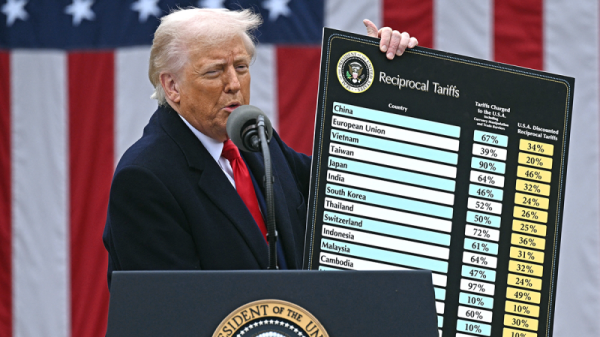Long Butterfly Spread Example and All Details Explained
Have you recently wondered what the Long Butterfly Spread example and details stand for? Why is it so essential for you as a trader to understand the main factors of this very much-traded strategy?
And where to start with this whole story about the butterfly spread options and so on? Spreads, in the first place, as a term in finance, represent the diversion or opening among two particular rates, prices or yields.
You’ve probably heard about the “bid-ask spread”, the most commonly used one and the opening among buyers and sellers’ security or asset prices.
However, those who are eager to learn more about the butterfly spread strategy should get all the basic information and find out what the Long Butterfly spread example and all the details
are about!
Let’s get started from the core basics of it, shall we?
What does a Long Butterfly Spread mean?
Long Butterfly spread, using call options, represents a tri-component approach. It involves purchasing one call with a lower strike, selling two calls at a medium strike, and buying one at a higher strike.
Every call has an identical expiration date, and their strikes are evenly spaced. For instance, one might buy a 95 Call, sell two 100 Calls, and buy a 105 Call.
This tactic is set up for a net cost, capping potential gains and risks. The highest profit is achieved in case the price of a stock matches the middle strike price at expiration.
The utmost risk equals the overall expense of the setup, including fees, and occurs if the stock price surpasses the greatest strike or falls under the lowest strike at expiry.
What does this technique offer?
This advanced technique typically offers limited monetary gain due to high associated expenses. The three diverse strike prices mean multiple fees and three bid-ask spreads when initiating and exiting the position.
Therefore, executing this strategy at favourable prices is crucial to maintaining a satisfactory risk/reward balance, including commissions.
Maximum Profit – Explained
The highest possible gain is the difference between the lower and middle strike prices minus all the setup costs and fees. You get this gain in case the price of a stock is the same as the middle strike price when the calls expire.
For instance, with a $5.00 gap between the lower and middle strike prices and a setup cost of $1.25 (not counting fees), the top profit is $3.75, minus any additional fees.
Maximum Risk – Explained
The biggest risk is the total cost of setting up the position, including any fees. You will face this loss in two situations. First, if the stock price gets beneath the lowest strike price at expiration, all the calls will be worthless, and you will lose the total setup cost, including fees.
Second, if the stock price exceeds the biggest strike price at expiration, all calls will have value. Still, the net worth of the Butterfly spread will be zero at expiration, again causing a loss exact to the entire setup cost, including fees.
What is the best example of Long Butterfly Spread with Calls?
If you’re wondering what’s the best long call butterfly spread example, here’s the perfect one:
Purchase 1 ABC 90 call for 5.50 (cost: 5.50)
Sell 2 ABC 95 calls for 2.75 each (credit: 5.50)
Purchase 1 ABC 100 call for 1.20 (cost: 1.20)
Total cost = (loss: 1.20)
What Are the Main Characteristics of a Butterfly Spread?
A butterfly spread strategically employs four option contracts, each sharing the same expiration date but differentiated by three unique strike prices: higher, middle (at the money), and lower.
This structured alignment includes equal distance from the upper strike price and lower to the centre strike prices.
For instance, in constructing a long call butterfly spread, one buys an in-the-money call option and an out-of-the-money call option with varied strike prices while concurrently selling two at-the-money call options.
When does this arrangement culminate?
This arrangement culminates in a net debt upon initiation. The max profit is unlocked when the underlying asset’s price at expiration coincides with the pricing of the short, call or put, centre strike prices.
Similar in structure but using put options is the long put Butterfly spread. Both the calls and put options strategies yield comparable profit and loss dynamics.
Contrarily, the short iron butterfly approach employs both calls and puts, creating an intricate balance that also thrives within specific price movements of the underlying asset, emphasizing the significance of the upper and centre strike prices in determining outcomes.
What are the types of Butterfly Spreads?
Here are all the common types of Butterfly spreads you need to be aware of:
Long Call Butterfly Spread
Setup: Buy a low-strike call, sell two middle-strike calls, and buy a high-strike call.
Cost: Starts with a debt.
Profit: Maximized if the ending price equals the middle strike price.
Loss: Limited to the premiums and fees paid.
Long Put Butterfly Spread
Setup: Buy low and high-strike puts and sell two middle-strike puts.
Cost: Starts with a debt.
Profit**: Maximized if the ending price is the middle strike.
Loss: Limited to the premiums and fees paid.
Short Call Butterfly Spread
Setup: Sell a low-strike call, buy two middle-strike calls, sell a high-strike call.
Credit: Begins with a credit.
Profit: Max if the ending price is above the high or below the low strike.
Loss Middle minus low strike, less received premiums.
Short Put Butterfly Spread
Setup: Sell a low-strike put, buy two middle-strike puts, sell a high-strike put.
Credit: Starts with a credit.
Profit: Max if the ending price is above the high or below the low strike.
Loss: High minus middle strike, less received premiums.
Iron Butterfly Spread
Setup: Buy a low-strike put, sell a middle-strike put and call, and buy a high-strike call.
Credit: Begins with a credit.
Profit: Max if the ending price is the middle strike.
Loss: High minus middle strike, minus received premiums.
Reverse Iron Butterfly Spread
Setup: Sell a low-strike put, buy a middle-strike put and call, sell a high-strike call.
Cost: Starts with a debt.
Profit: Max if the ending price is above the high or below the low strike.
Loss: Limited to total premiums paid.
What is the Butterfly spread payoff diagram all about?
The long call butterfly payoff diagram displays risk and reward, which is crucial for understanding price movement. Like the iron butterfly options strategy, the maximum loss is defined at the start as the total initial cost of call options.
This loss is realized if the closing price moves outside the long options, akin to options expiring worthless.
In our example, a trader buys a call centre at $100, with upper and prices of lower strike at $110 and $90, respectively, and an entry cost of $5.00, marking the highest possible loss.
If the stock trades at $100 at expiry, the two short call options expire worthless, leading to a profit after deducting the initial cost and option premium.
What happens if the stock price remains within the long call “wing”?
If the stock price remains within the long call “wing,” short calls retain value. The gain or loss is determined by selling the lower strike long option and considering the original debit.
Below $100 at expiration, all options, except the lower long call, expire worthless, shaping the profit or loss after accounting for the initial cost, akin to the money put option in other strategies.
The break-even point is reached when the stock price equals the long options strike prices, adjusted by the paid premium.
Conclusion
In the Long Butterfly Spread with calls, a three-part plan maximizes profit with aligned strike prices. While capping gains and losses, this method demands precise execution and mindful management of associated costs to ensure a favourable risk/reward balance amidst multiple fees and bid-ask spreads.
FAQ
What is a long butterfly spread using call options?
A long butterfly spread with call options is a strategy involving buying and selling call options with different strike prices but the same expiration date. It caps both potential profits and losses.
How is a long butterfly spread set up?
It involves buying one call with a lower strike, selling two calls with a middle strike, and buying one call with a higher strike. For example, buy a 95 Call, sell two 100 Calls, and buy a 105 Call.
What is the maximum profit and risk in this strategy?
The highest profit is realized if the stock price equals the middle strike price at expiration. The utmost risk is the total cost of the setup, including fees, realized if the stock price is above the highest or below the lowest strike at expiry.
Why is it considered an advanced strategy?
It’s considered advanced due to limited profit potential and high associated costs, including multiple fees and bid-ask spreads when both entering and exiting the position.
How can one maintain a favorable risk/reward balance?
It’s crucial to execute the strategy at favorable prices to ensure a satisfactory risk/reward balance, accounting for all associated commissions and fees.
The post Long Butterfly Spread Example and All Details Explained appeared first on FinanceBrokerage.


































